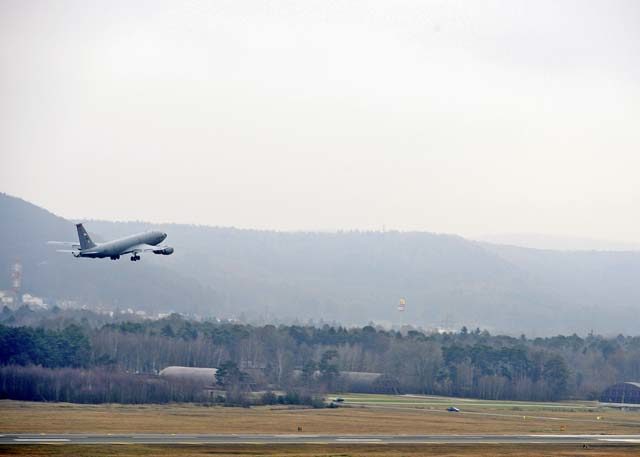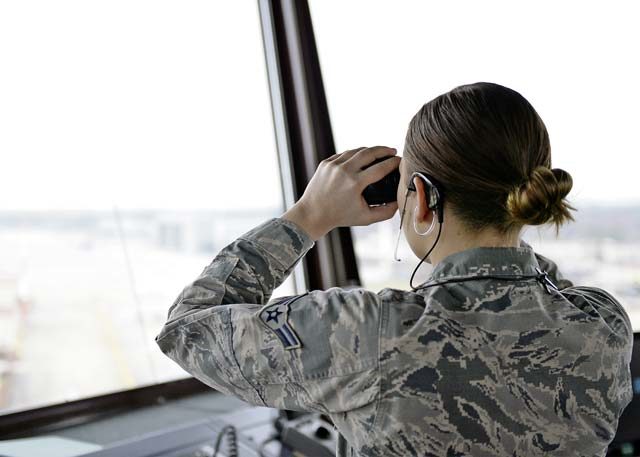
Maintenance keeps aircraft operating efficiently and pilots operate the aircraft, but while in the air, it’s the eyes on the ground that are critical to the safe operation of aircraft.
Airmen from the 86th Operations Support Squadron air traffic control tower have possibly the most stressful job in the Air Force as they are charged with communicating with pilots to safeguard million-dollar aircraft and priceless lives during takeoffs, landings, and in flight.
“One mistake on our end could have a dire impact to the Air Force and families of the crew members on the plane,” said Airman 1st Class Francis Dyball, 86 OSS air traffic controller apprentice. “We have to stay healthy and alert at all times to ensure we are only doing our best, day in and day out.”
On any given day, Ramstein air traffic controllers can oversee approximately 200 sorties and safely guide each aircraft in the airspace to its destination.
Airmen in the ATC career field undergo rigorous and continuous training to help build their skills and confidence in preparation for any challenges they may run into.
“On average for air traffic controllers in the Air Force to receive their (occupational) badge, it takes approximately 12 months,” Dyball said. “After being rated, when we move to another base, we have to start from square one with training. We then learn the operations for the specific airfield and its aircraft at our new location.”
At Ramstein, cargo planes are the primary aircraft that operate within the airfield, but many others have been guided through the airspace.
“Even though heavy cargo aircraft is the primary type of airframe we have in our airspace, we see a wide range of aircraft come through,” said Staff Sgt. Eric Hoffman, 86 OSS air traffic controller journeyman. “The variety of aircraft we see here can add multiple challenges. Each airframe has different restrictions and operational limits which we have to plan out when communicating to the pilots.”
After the daily stress of the job dissipates and Airmen retire to their personal lives, the accomplishment of air traffic controllers maintaining the wing’s mission of generating and employing airpower leaves the controllers with a sense of pride.
“The best part of the job to me is the prestige,” Hoffman said. “It’s a difficult career that not everyone can do, and the challenge of getting your badge makes it very humbling. I couldn’t imagine doing any other job.”



